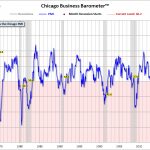The measure of a man’s real character is what he would do if he knew he would never be found out. Lord Macaulay wrote this nearly two hundred years ago. His aphorism is particularly apposite of modern politicians, and also of the modern state itself, which is meant to be selfless in the interest of the common good. We can be certain that when a person moves from outside to inside the machinery of the state, he or she changes from representing the people to represent the state. Presumably, there are honorable exceptions to this rule, but offhand, it’s hard to think of any in contemporary politics.
The failure of the test of a politician’s real character goes much deeper. Once he is embraced by the state, he has at his hands the tools of propaganda and disinformation. He can stoke up nationalism to swing a nation behind him. Some of us will have read Machiavelli’s Prince, that masterwork of the political arts, which instructs a politician how to retain and exploit political power. But very few of us are fully aware of the far darker arts of monetary debasement. It is no longer so crude as reducing the silver content of the denarius or issuing notes without the gold to cover it. No, with the panoply of treasuries, central banks and statistical departments, monetary debasement is subtler today, providing cover for the ultimate fraud committed by the state on its population.
It starts with terminological inexactitudes, such as a falling exchange rate is required to stimulate the economy, or put another way, two per cent inflation stimulates spending. This justifies monetary debasement. It continues with denials of everything established and understood before Keynes, particularly Say’s law[i]. And having set the groundwork for the new, state-sponsored economics, we have moved on to doctoring the results.
Most people are aware that statistics can be manipulated to the point where they are meaningless, yet the financial community hangs onto their decimal points as if they were the gospel itself. Computer models also tell us with suspicious precision what increase in GDP (it’s always an increase) we can expect two or three years hence.
It’s all baloney. It’s not just a matter of garbage in, garbage out either. A dynamic, continually evolving economy just cannot be modeled, not even with artificial intelligence, because the model cannot replicate the changing progression of human action. A model cannot know what consumers will actually buy tomorrow. Nor what quantities of any particular product, some not yet even invented, will be desired by consumers in a year’s time. Not even the consumers know.
Yet, the financial community as a whole is seemingly unaware that the econometricians’ static statistics are only a snapshot of a previous point in time and cannot replicate an ever-evolving economy. And those feeding the garbage in are mostly goal-seeking their desired outcomes. Econometricians have also retreated into standardizing their computer models. This is designed to add credibility to a false process, but all it means is the errors themselves are now standardized.
A whole industry is not only being paid to model fiction, but economists and econometricians are now little more than latter-day shamans. We, members of the ordinary population, are the mugs.
At the center of all this statistical nonsense is GDP. It is no more than a money total, which is the quantity of money recorded as spent by consumers on the products included in it over a given period. It excludes items, which according to our static statisticians, must be excluded. It is sometimes rebalanced, always with hindsight. Furthermore, as a measure of economic production GDP is far from being a gross number, because it excludes the production of the goods and services, such as the components, machinery and transport used in the production of final products.
This point has been partly conceded by America’s Bureau of Labor Statistics, which now estimates gross output (GO) quarterly, to include recorded business-to-business transactions. The effect is to more than double the US’s GDP figure.[ii] So, even if we did live in the static world that accords with statistical analysis, GDP fails to capture economic activity.













Leave A Comment